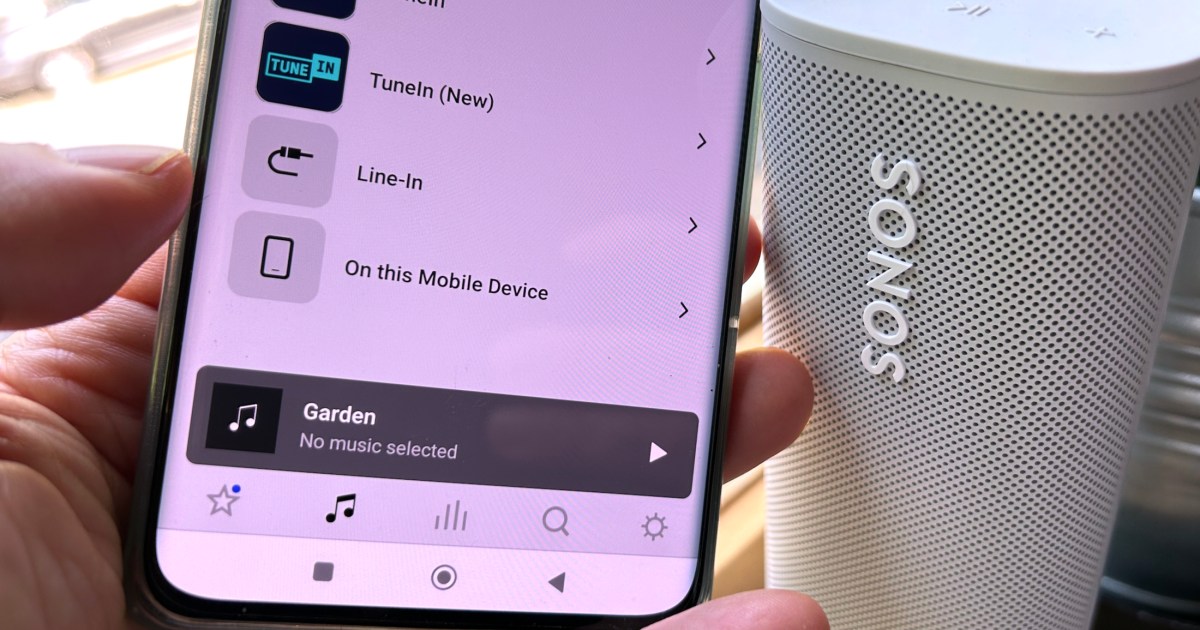
If you’re a Sonos owner, I can almost guarantee that at some point (and maybe many points) since the launch of the company’s redesigned app, you’ve wanted to throw your phone at the wall. The frustration of not being able to use the wireless speakers in your home may be a quintessential first-world problem, but it doesn’t change the fact that this was all so avoidable. But now there are rumors that Sonos is contemplating bringing back its old app — known as Sonos S2 — and I couldn’t be more supportive. Frankly, I don’t know why it hasn’t already happened.
When the new app launched in early May, I immediately noticed a slew of missing features and performance issues. My reaction — which was shared by many industry watchers — was a wait-and-see approach. Software bugs are just a fact of life, and Sonos has had to squash plenty of them over the years. I was willing to give the team the benefit of the doubt, and I fully expected that by the end of May — maybe, worst-case scenario, mid-June — everything would be back to normal.
But when those timelines came and went, and it became clear that progress on the new app was painfully slow (while at the same it felt like people were discovering new bugs daily), my optimism sank. I joined the rest of my fellow Sonos owners in the awful new normal of never knowing if my speakers would respond to my commands, or if the app would even recognize my system. To this day, when I open the new app, there’s a 50/50 chance it will ask me if I want to set up a new Sonos system.
As soon as the new app hit its one-month anniversary in June and the Sonos engineering team realized that the needed fixes were going to take months to implement, CEO Patrick Spence should have done what executives do: made the executive decision to withdraw the new app and bring back the S2 app.
I can only think of one reason why this didn’t happen: Sonos’ most important new product in years — the Sonos Ace headphones — need the new app. Without it, they’ll still function like normal Bluetooth headphones, but you won’t be able to make any adjustments to settings or update their firmware. Moreover, Ace owners wouldn’t be able to use one of the Ace’s most touted features: the ability to swap a Sonos Arc soundbar’s spatial audio to the headphones with the press of a button.
And that’s basically what Spence said on the company’s earnings call on August 7: “We viewed rearchitecting the app as essential to the growth of Sonos as we expand into new categories and move ambitiously outside of the home.”
I certainly understand Spence’s reluctance to let down Ace owners. But I do not understand throwing all Sonos users under the bus in order to preserve a small chunk of functionality for an incredibly small percentage of the company’s customers.
In his official apology for the situation, Spence laid out a months-long plan that will see the new app finally work the way everyone thought it should have from the start. I’m delighted that Sonos has a plan. I’m not happy at all that we have to suffer while the plan is put into action.
Is supporting the Sonos Ace headphones worth bricking the entire system for everyone else
The answer is obvious, as it has been from the start of this fiasco, for those who were clear-eyed enough to see it: bring back the old app. And don’t rerelease the new one until it has all of the features and reliability Sonos owners have come to expect.
To be clear, there could be risks to this approach. Going back to S2 after updating to the new app might have some unintended consequences as Sonos hardware is forced to adopt older code. Sonos’ support staff might be deluged with a new round of folks calling in need of help. And yet, surely this is better than having users resort to a third-party app just to be able to use their speakers?
Sonos has been here before. When it decided to sunset support for some of its oldest products, effectively making them unusable, customer backlash was swift and strong. In the end, Sonos decided to let customers decide between the S1 app (which would work with all of their existing products, but would receive no updates) or migrate to the S2 app, which would only work with newer products.
It was the right call. It gave customers a choice over how to use their products. Many ended up splitting their systems into old and new. It meant using two apps for two different collections of Sonos products, but as an alternative to throwing out perfectly functional equipment, it made a lot of sense.
A similar approach could be used for the return of the S2 app: If customers don’t own the Sonos Ace, or they do and don’t mind temporarily losing the ability to change their headphone setting, they can revert to S2. Everyone else can stick with the new app. Once the new app is fully fixed, Sonos could once again retire the S2 version.
Services Marketplace – Listings, Bookings & Reviews
